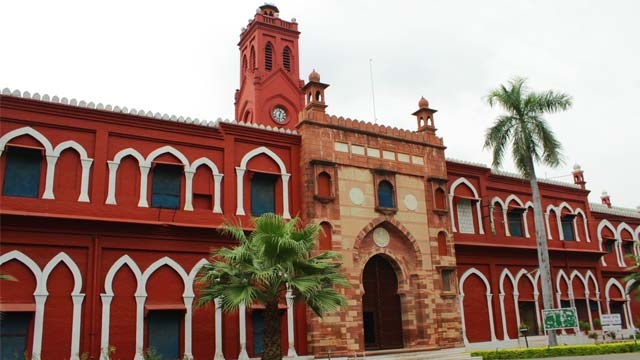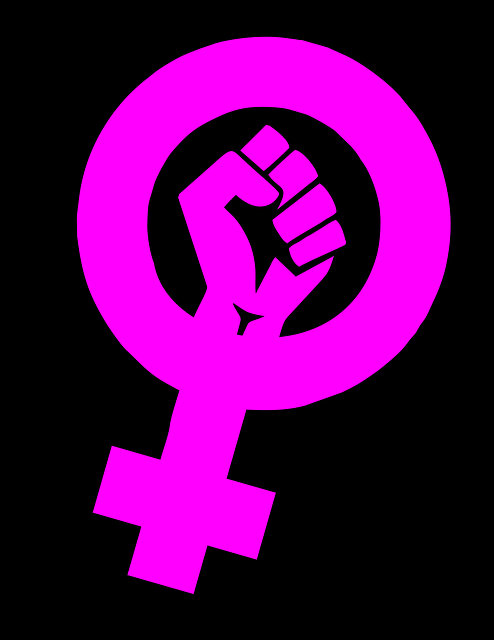
Of late, I am coming across on the strange discussion on “ Dalit Patriarchy “ . I see a lot of confusion around this concept and this write up tries to delve deeper into the validity, rationality and viability of the concept on the established principles of creating an ideology.
Feminism is considered as- “ the advocacy of women’s rights on the ground of the equality of the sexes “ . We should not have a deviation in understanding and appreciating what this feminism generally means to anyone. When it comes to the rights of women, there is no second question on being lenient on it on whatever grounds they may be placed on. The Indian society is complex with innumerable cross overs and that is how and why the conventional Marx is denied here , in an extent, as the interpretation of “ Oppression” itself is quite viewed in an unconventional perspective. He picturises this society as something like – people stay in each floor with no access to the other floor which is like ‘ neither you can go up nor you can go down ‘. Our problem of classification of this society is not just people having caste as a culture in their “brains” but it is the question institutionalisation and structural casteism.
This leads us to conclude that the individual reformism is the last step to carry as someone has to break the barriers of social capital to augment. The gravity of the question of “Social capital” can be seen from the fact that recent arrests in CAA/Bhima Koregaon issues are just to meant to isolate certain type of people carrying certain ideas from regular social life and treat them like aliens and , further, also creating an institutionalised scare amongst masses to carefully adjust their ideologies to suit Brahminism and fall in line with majoritarianist sections.
Treatment of women in caste and class society
Now, once we trust that we are all on same page having no qualms in admitting what Ambedkar’s visualisation of the stratification of the society is right, we will have to see how women are put into institutionalised oppression in the whole gamut. In a general burgeosie class society , the women is confined and put in certain boundaries as they are perceived as under :
- Women are physically weak and they cannot be equated with men in work place and thus they deserve lesser financial reciprocation
- Men are perceived as “labour” inputs to a production and hence women too as “cheap labour “
- While child care and domestic work can either be commercialised or put to automation, women , thus , can also be available as “commodity” to entertain men and promote various commodities
Added to this, typically, this Indian society, having classical feudal ideologies rooted in its bourgeoise society, views women in the following respects
- Women are sexual gateways to respective caste
- Women are the carriers of caste pollution
- Women are weak in thinking and we need to bind them through a structural mechanism
- Women should not be given the right to independent thinking which they might utilise to dilute caste and disperse social capital
- Main role of women is to participate in reproduction, children’s physical care and domestic work.
Having agreed that we are a stratified society, which is essentially a closed stratified society, has enclosures around women too. A woman in one enclosure cannot be equated with the other woman because of varied social stratification. Thus though Brahmin women are considered to be more pious than Dalit women and much more revered than a Dalit woman, they are the ones who were excruciated by certain abominable traditions like “ Sati “.
This takes us to consider “ Dalit Feminism “ as a separate subject from regular “ Feminism “. Dalit feminism primarily encompasses not just about women’s rights but also the question of social stratification of women too along with it, while general feminism puts every woman on par with each other. Women, in India, do not carry any independent identity for themselves except caste. Men pilots the caste and women nurtures the caste through “ family structures “ and “ endogomy “. “Family “ is the structure which nurtures caste in the society and “Family “ lives on “Endogomic principles ”
An upper caste woman can disown her husband but cannot disown her caste and she needs her caste to continue to elevate her identity in the society. She also wishes to live on the “Social Capital” what her caste people augmented over a period of time. End of the day, when the family needs to move on in the society , the entire lineage is put to stake thus obstructing every family member’s progress. We must not confuse this intersection as the question of priority of problem of Dalit woman over the problem of “Family ( caste) “ or vice versa
The relevance of adding adjectives to “Patriarchy “
Patriarchy needs to be characterised by its dominance and power not at individual level alone but at institutional level. I think we have strong confusion in understanding a man and extrapolating this to a larger theory. The matter of man overpowering woman is a general patriarchal principle. . The question is that internal structural problems neither break the stratification nor secure the individual positioning for an assured good for all in the same social class. The Dalit man beating his wife or a Dalit boy teasing a Dalit girl are not specifically and specially institutionalised. There is no scriptural support, there is no specific State support , there is no privileged cultural support Dalit man enjoys in dominating Dalit woman. However, we need to agree that Dalit woman suffers caste as an institution while men are her immediate Patriarchal discouragement to her.
That does not mean the Patriarchy has an adjective like “ Dalit “ preceding “ Patriarchy “. When you put “Dalit “ preceding “Patriarchy” you want to vilify a particular social status as an inherent feature to the “Patriarchy “. The irony is that “Dalit “ does not carry any such features which can qualify to be an “adjective “ phrase. If someone means that Dalit boy harassing a dalit woman is what is “Dalit “ here in the entire patriarchal game, their outlook of philosophy is definitely blundered. Dalit man is not harassing a girl because she is dalit nor he is taking advantage of a situation that he is “Dalit “. Dalit is not a privileged position . “Dalit” is not an empowered dominance. I can completely understand the confusion surrounding this sort of Patriarchy. Before, we further consider how to name this, we need to satisfy ourselves how to accept this “ Dalit Patriarchy “ ? Let us consider a case – I know a Dalit boy teasing an OBC girl. If someone wants to put a frame to it and label it, can they club this and say it is “Dalit Patriarchy “ ? Thus the argument to promote the concept of “Dalit Patriarchy” looks ridiculous. This does not be construed as – Dalit man who harasses a Dalit woman is right and he needs to be sympathised, which we have clearly spelt out in the prologue to this write up.
How to view a Dalit man harassing a Dalit woman either in the family or outside ?
A Dalit man is harassing Dalit woman because he knows well that the stigmatisation woman suffers is more rising out of her confrontation and hence she tries to adjust her position close to a “compromise” reckoning the cost benefit analysis of ‘ retaliation ‘ and ‘ compromise ‘. Now which Dalit framed rules for such sort of majoritarianist perspective ? or which Dalit institution, if any, has built a ground of support for such attitude ? In the absence of answers to these questions, we would not be doing a justice to the problem by identifying it with an adjective “Dalit” around this Patriarchy. This is a generic Patriarchy in any society. Especially, this conflict is happening is within the caste enclosure. All the sub-systems in caste society have generic bias for men. It looks silly to ask ourselves that does Dalit Patriarchy imply – Dalit woman , first, needs to fight Dalit men before they fight caste ? When that is not the perspective, what additional purpose the “Dalit “ serves to categorise “Patriarchy “ as “Dalit “? This is a problem generic to every low class section in every society. There is Black feminism but there is no Black Patriarchy. It is true that Dalit man enjoys certain privileges over Dalit woman in terms of social status, employability etc. However, Where does he use his privilege against ? If you study the isolated tribes in any continent, you will see a patriarchy. Even the western class society does not categorise “Patriarchy” into “Upper Class Patriarchy “ and “ Lower Class Patriarchy “. That simply makes “Dalit Patriarchy “ as a funny oxymoron.
The need to understand a generic Patriarchy is relevant here before anyone feels pressure to join any adjectives to it. The fundamental mistake anyone is doing in the whole debate is to consider (i) “women” as one “homogenous group ; and (ii) hypothesising that women on standalone basis, are socially mobilizable. Had this been the basis, Marx and Lenin would have formulated theories on “Proletariat Women Dictatorship” rather than “Proletariat Dictatorship “. In fact neither Ambedkar nor Marx , if not wrong Lenin too, never used the term “ feminism “ because its theories do not have independent political existence except for identity attestation, if not, identity affirmation. We may be able to annihilate caste and class in any foreseeable long future but obliterating the Patriarchy out of this society is farther dream than it is, which may be a fact difficult to digest looking to the history. That should not discourage us to undermine the question of women ( Lenin preferred to use this phrase rather ) , which should be paramount in our thinking, treatment and positioning.
P Victor Vijay Kuma An investment banker and writer
SIGN UP FOR COUNTERCURRENTS DAILY NEWSLETTER
















































